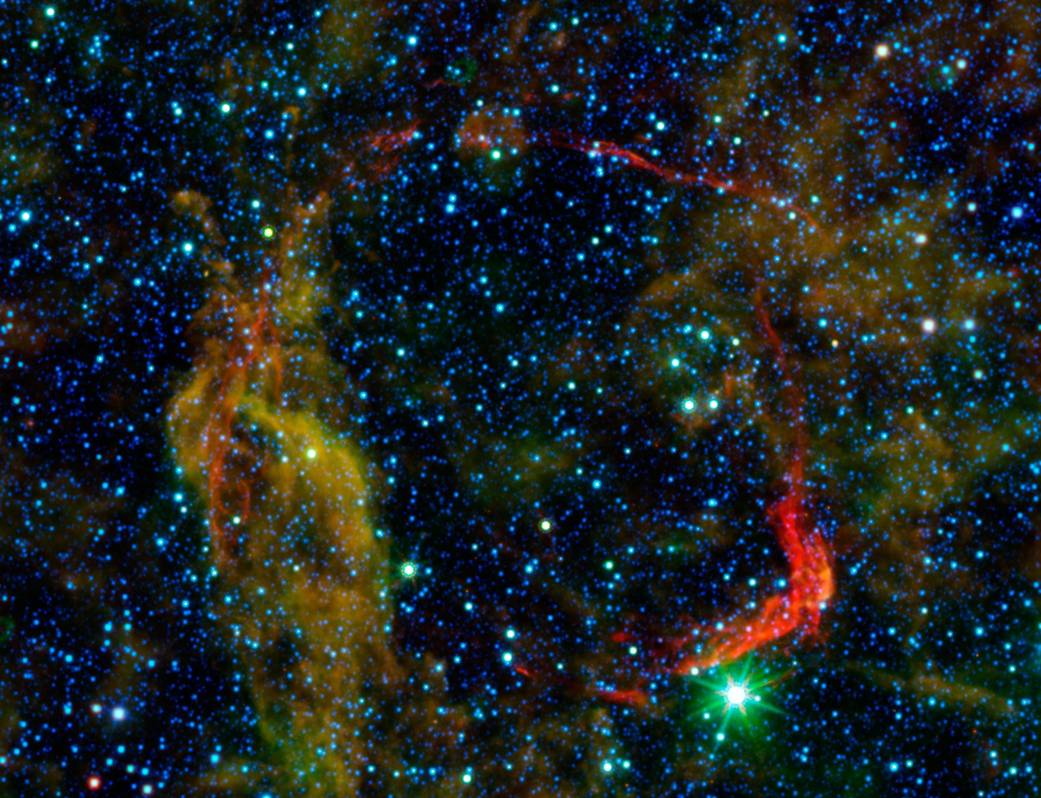
Infrared images from NASA’s Spitzer Space Telescope and the Wide-field Infrared Survey Explorer, or WISE, were combined in this image of RCW 86, the dusty remains of the oldest documented example of an exploding star, or supernova. It shows light from both the remnant itself and unrelated background light from our Milky Way galaxy. The colors in the image allow astronomers to distinguish between the remnant and galactic background, and determine exactly which structures belong to the remnant.
Dust associated with the blast wave of the supernova appears red in this image, while dust in the background appears yellow and green. Stars in the field of view appear blue. By determining the temperature of the dust in the red circular shell of the supernova remnant, which marks the extent to which the blast wave from the supernova has traveled since the explosion, astronomers were able to determine the density of the material there, and conclude that RCW 86 must have exploded into a large, wind-blown cavity.Image Credit: NASA/JPL-Caltech/UCLA


























